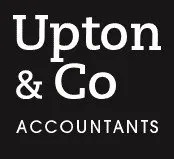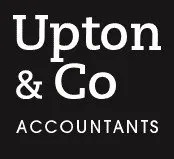Extracting extra income from your company
It’s that time when the Christmas financial hangover hits and your self-assessment bill is on the way, so you might need a little extra from your company to get you through. What are the most tax-efficient options?

Company income
As a company owner manager, if you’re looking for financial help from your company, broadly you have three choices: salary, dividends or benefits in kind. If it’s cash you need it has to be the first two; however, benefits have their place and we’ll come to those later in the article.
Comparison
As a rule of thumb, salary in excess of the NI threshold (£9,100 for 2024/25) is the least efficient option compared with dividends, which are usually the most tax efficient despite successive strikes by the government in recent years to reduce their advantage.
Example. Janice is the owner manager of Acom Ltd. Her salary for the whole of 2024/25 will be £9,100 and her dividends, £40,000. Janice would like a little extra this year. If she takes dividends or salary at a cost to Acom of £10,000, and assuming it is liable to corporation tax (CT) at the small profits rate (19%), this produces the following outcomes.
|
Gross income |
Tax + NI |
Net income |
|
|
Salary |
£10,849 |
£4,909 |
£5,940 |
|
Dividends |
£10,000 |
£3,082 |
£6,918 |
If Janice requires cash, a dividend is the way to go. However, benefits in kind are a potentially more tax-efficient alternative. Our profit extraction calculator helps you work out the most tax and NI-efficient method for taking additional income from your company (see The next step ).
Tax-free or taxable
Benefits can be liable to tax and NI (employers’ only) or wholly exempt. Taxable benefits are more tax efficient than salary of an equal value but in most circumstances less efficient than dividends. Conversely, tax and NI-exempt benefits are more tax efficient than dividends.
A drawback of benefits is that they aren’t in cash. Therefore, they work best when used to replace an expense you would otherwise have to meet from your cash resources, e.g. bank account.
Example. Lars is a higher rate taxpayer. His company provides him with a mobile phone, which saves £1,000 per year, and is a tax and NI-exempt benefit. What’s more, his company can claim CT relief on the cost of providing the phone, saving it up to £265. Compare this to a dividend of £1,000: the tax bill would be £337 with zero CT relief.
Limited choice
While there’s a wide range of exempt benefits, only some are suitable as an alternative to dividends, e.g. mobile phones, pension contributions, pensions advice, some childcare costs, bikes under the cycle-to-work scheme, benefits costing up to £50 and a few others. A full list of tax and NI-free benefits are listed on HMRC’s website Another advantage of benefits over dividends is that they can be provided even if your company has no profits. This makes them especially worth considering in start-up companies where profits are tight or there are losses.
Related Topics
-
Simpler Recycling rules take effect
New rules on how workplaces must sort their waste and recycling have taken effect from 31 March. What are the key changes to be aware of?
-
New CGT reporting tool
Self-assessment returns aren’t set up for the change in capital gains tax (CGT) rates on the government filing system and will require a manual adjustment for 2024/25 to ensure the correct amount is paid. Why is there a problem and can a new online tool help?
-
MONTHLY FOCUS: THE ENTERPRISE INVESTMENT SCHEME QUALIFYING CONDITIONS
The enterprise investment scheme (EIS) is a generous collection of tax reliefs aimed at encouraging private investment into relatively young companies. In this Focus, we look at the qualifying conditions relating to the investor and the issuing company that must be met in order for a claim for relief to succeed.




 This website uses both its own and third-party cookies to analyze our services and navigation on our website in order to improve its contents (analytical purposes: measure visits and sources of web traffic). The legal basis is the consent of the user, except in the case of basic cookies, which are essential to navigate this website.
This website uses both its own and third-party cookies to analyze our services and navigation on our website in order to improve its contents (analytical purposes: measure visits and sources of web traffic). The legal basis is the consent of the user, except in the case of basic cookies, which are essential to navigate this website.